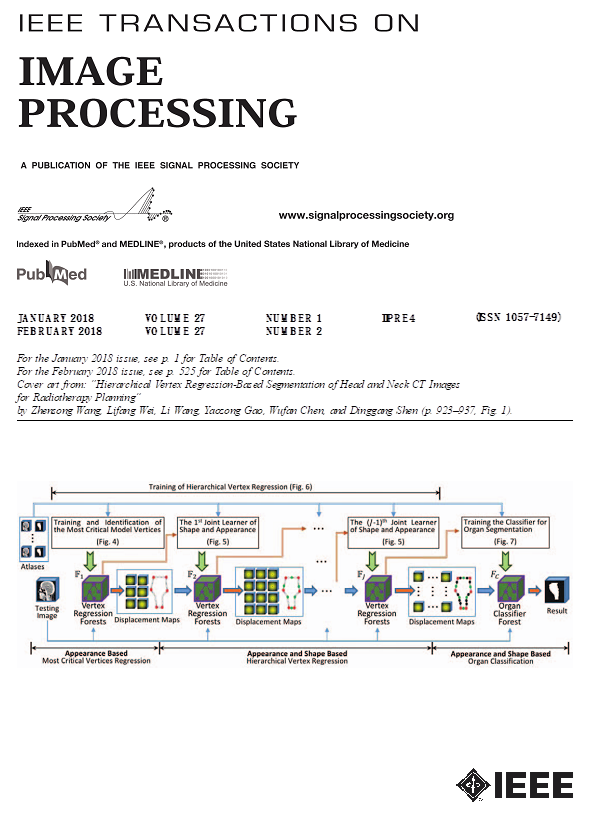Real Image Denoising With a Locally-Adaptive Bitonic Filter
IF 13.7
1区 计算机科学
Q1 COMPUTER SCIENCE, ARTIFICIAL INTELLIGENCE
引用次数: 3
Abstract
Image noise removal is a common problem with many proposed solutions. The current standard is set by learning-based approaches, however these are not appropriate in all scenarios, perhaps due to lack of training data or the need for predictability in novel circumstances. The bitonic filter is a non-learning-based filter for removing noise from signals, with a mathematical morphology (ranking) framework in which the signal is postulated to be locally bitonic (having only one minimum or maximum) over some domain of finite extent. A novel version of this filter is developed in this paper, with a domain that is locally-adaptive to the signal, and other adjustments to allow application to real image sensor noise. These lead to significant improvements in noise reduction performance at no cost to processing times. The new bitonic filter performs better than the block-matching 3D filter for high levels of additive white Gaussian noise. It also surpasses this and other more recent non-learning-based filters for two public data sets containing real image noise at various levels. This is despite an additional adjustment to the block-matching filter, which leads to significantly better performance than has previously been cited on these data sets. The new bitonic filter has a signal-to-noise ratio 2.4dB lower than the best learning-based techniques when they are optimally trained. However, the performance gap is closed completely when these techniques are trained on data sets not directly related to the benchmark data. This demonstrates what can be achieved with a predictable, explainable, entirely local technique, which makes no assumptions of repeating patterns either within an image or across images, and hence creates residual images which are well behaved even in very high noise. Since the filter does not require training, it can still be used in situations where training is either difficult or inappropriate.基于局部自适应Bitonic滤波器的实景图像去噪
图像噪声去除是一个常见的问题,有许多解决方案。目前的标准是由基于学习的方法设定的,然而,这些方法并不适用于所有场景,这可能是由于缺乏训练数据或需要在新环境中具有可预测性。双音滤波器是一种非基于学习的滤波器,用于从信号中去除噪声,具有数学形态学(排序)框架,其中信号被假设为局部双音(只有一个最小值或最大值)在某个有限范围的域中。本文开发了该滤波器的新版本,具有对信号局部自适应的域,并进行了其他调整以允许应用于真实图像传感器噪声。在不增加处理时间的情况下,显著提高了降噪性能。对于高水平的加性高斯白噪声,新的双onic滤波器比块匹配3D滤波器性能更好。对于包含不同级别真实图像噪声的两个公共数据集,它也超过了这个和其他最近的非基于学习的过滤器。尽管对块匹配过滤器进行了额外的调整,这导致比以前在这些数据集上引用的性能要好得多。经过最佳训练后,新的双onic滤波器的信噪比比最好的基于学习的技术低2.4dB。然而,当这些技术在与基准数据不直接相关的数据集上进行训练时,性能差距就完全消除了。这证明了通过可预测、可解释、完全局部化的技术可以实现的目标,该技术不假设图像内或图像间的重复模式,因此即使在非常高的噪声中也可以创建表现良好的残余图像。由于过滤器不需要训练,它仍然可以在训练困难或不合适的情况下使用。
本文章由计算机程序翻译,如有差异,请以英文原文为准。
求助全文
约1分钟内获得全文
求助全文
来源期刊

IEEE Transactions on Image Processing
工程技术-工程:电子与电气
CiteScore
20.90
自引率
6.60%
发文量
774
审稿时长
7.6 months
期刊介绍:
The IEEE Transactions on Image Processing delves into groundbreaking theories, algorithms, and structures concerning the generation, acquisition, manipulation, transmission, scrutiny, and presentation of images, video, and multidimensional signals across diverse applications. Topics span mathematical, statistical, and perceptual aspects, encompassing modeling, representation, formation, coding, filtering, enhancement, restoration, rendering, halftoning, search, and analysis of images, video, and multidimensional signals. Pertinent applications range from image and video communications to electronic imaging, biomedical imaging, image and video systems, and remote sensing.
 求助内容:
求助内容: 应助结果提醒方式:
应助结果提醒方式:


